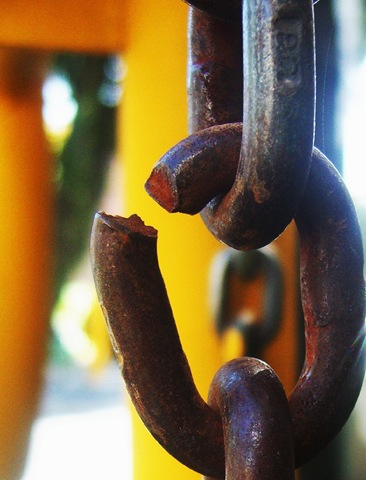Lack of product robustness can damage your brand
 There are many definitions of product robustness and just as many formally trained specialists willing to argue about them. I get confused by all that complexity, I don’t like to argue, and I am not a specialist, I am a generalist. I like simplicity so I use operational definitions every chance I get. Here’s one for product robustness:
There are many definitions of product robustness and just as many formally trained specialists willing to argue about them. I get confused by all that complexity, I don’t like to argue, and I am not a specialist, I am a generalist. I like simplicity so I use operational definitions every chance I get. Here’s one for product robustness:
A customer walks up to your product, turns it on, and it works without breaking or getting in its own way.
Bad product robustness is bad for your brand. Very bad. Customers do not like when they pay money for a product and it doesn’t work, especially when they rely on those products to make money for themselves. And they remember the experience in a visceral way.
You can’t fix bad product robustness with great marketing; you can’t fix it with spin selling; you can’t tell customers you fixed it when you didn’t (since they use your product, they know the truth); and you can’t hide it because customers talk (so do competitors). There is no quick fix – it takes tools, time, training, and new thinking to improve product robustness. And when you do manage to fix it, customers won’t believe you until the see it for themselves. They don’t want to get burned again.
No product is infinitely robust, nor should it be. It doesn’t make financial sense. The product would be infinitely expensive and would take an infinite amount time to develop. But how much robustness is enough? An easier, and possibly more important, question to answer is – how much is too little? Or, stated another way, what is the minimum level of product robustness?
The specialists won’t agree with my assertion that there is a minimum threshold for product robustness, but I don’t care. I think there is one. I call this minimum value the brand-damaging threshold. Here’s an operational definition of product robustness that’s below the brand-damaging threshold:
Customers don’t buy your product because they know it breaks or gets in its own way and they go out of their way to tell others about it.
It is difficult to know when customers don’t buy, never mind know why they don’t. But there are some tell-tale signs that product robustness is below the brand-damaging threshold. Here are a few.
The CEO takes enough direct calls about products that don’t work to feel obligated to send you a thoughtfully-crafted, four word email saying something like “Fix that @#&% thing!” Customers have to be really pissed off to call the CEO directly, so the situation is bad. It’s also bad for a reason that’s closer to home – the CEO sent the email to you.
You get a little sick to your stomach when sales increase. You know you should be happy, but you’re not. Deep down you know you’ll see many of those products again because they’ll be sent back by angry customers, in pieces.
The volume of returns is so significant you create a refurbishment department. Or you create a new group to scavenge the reusable stuff off the piles of returned product. Not good signs.
Your product’s lack of robustness is the headline message in your customers’ marketing literature.
Now that the brand-damaging threshold is defined, the next logical topic is how to improve product robustness so it’s above the threshold. But that’s for another post.
 Mike Shipulski
Mike Shipulski
As a sustaining engineer, this post really hits home ! I’ve worked on several brand damaging issues throughout my career at a number of high tech companies. I think you’ve really hit the nail on the head with this one. What you didn’t mention, nor should you since it’s not really relevant to this particular post, is the damage control that ultimately has to take place with the existing customers. Looking forward to the “how to improve product robustness” post.